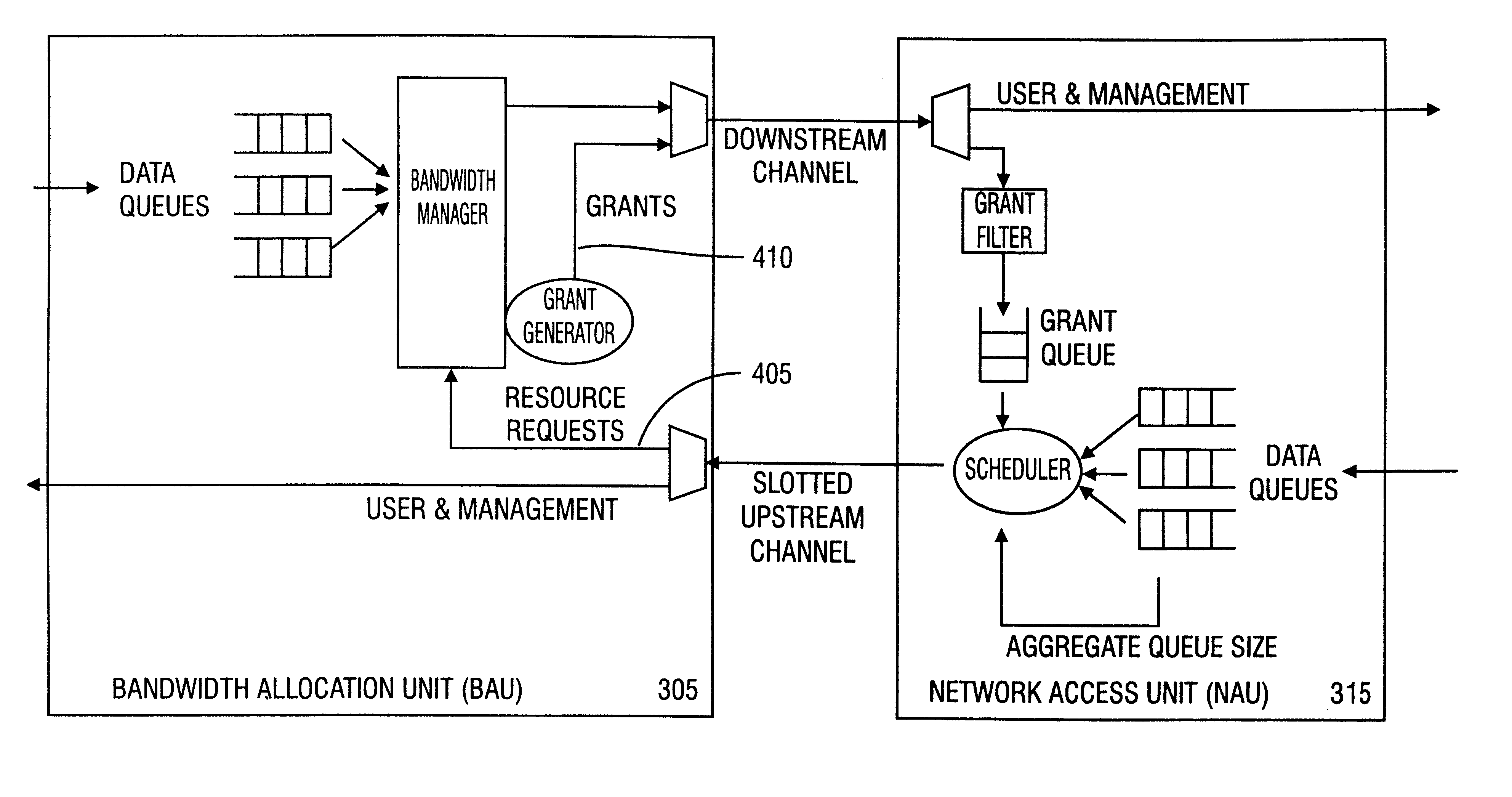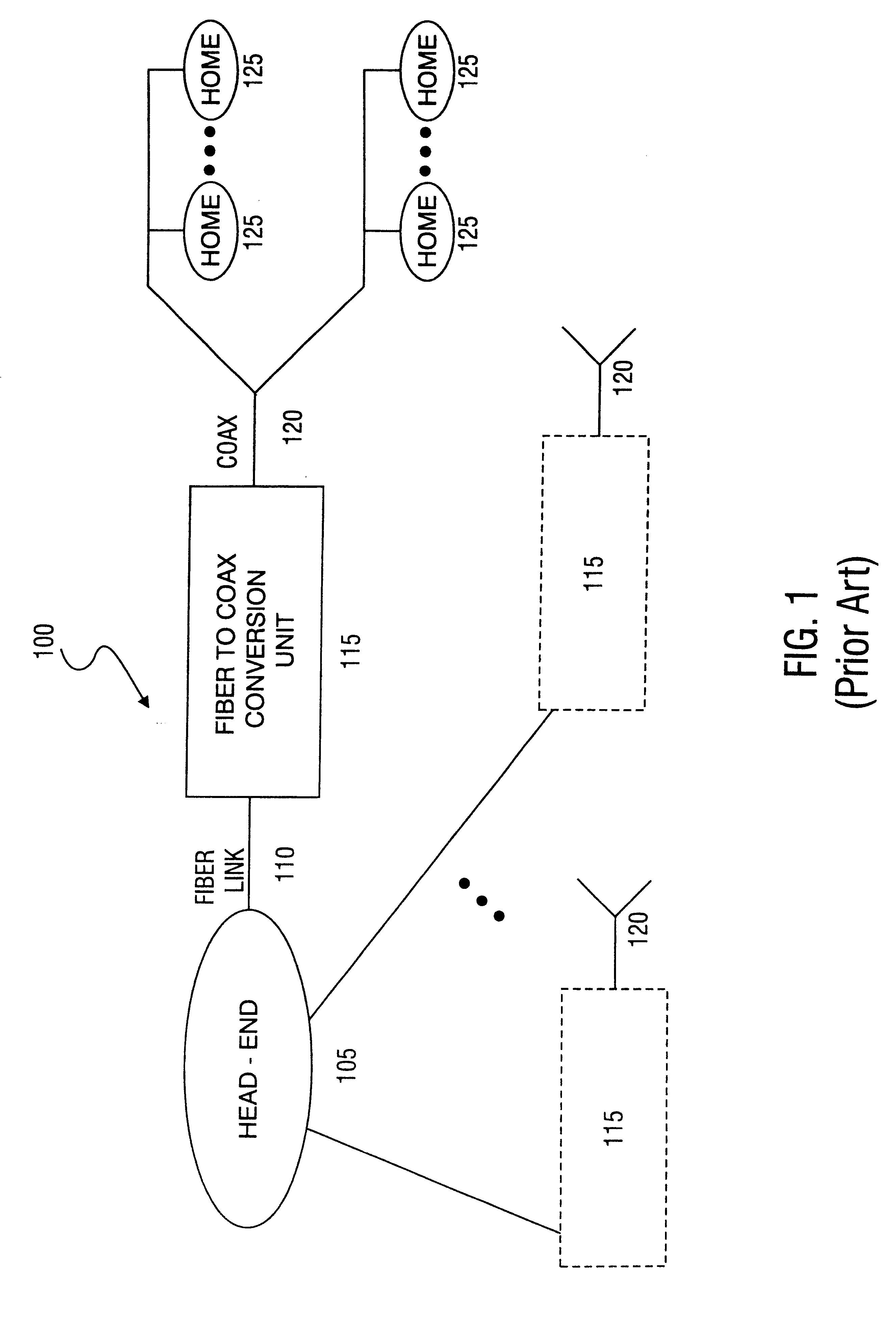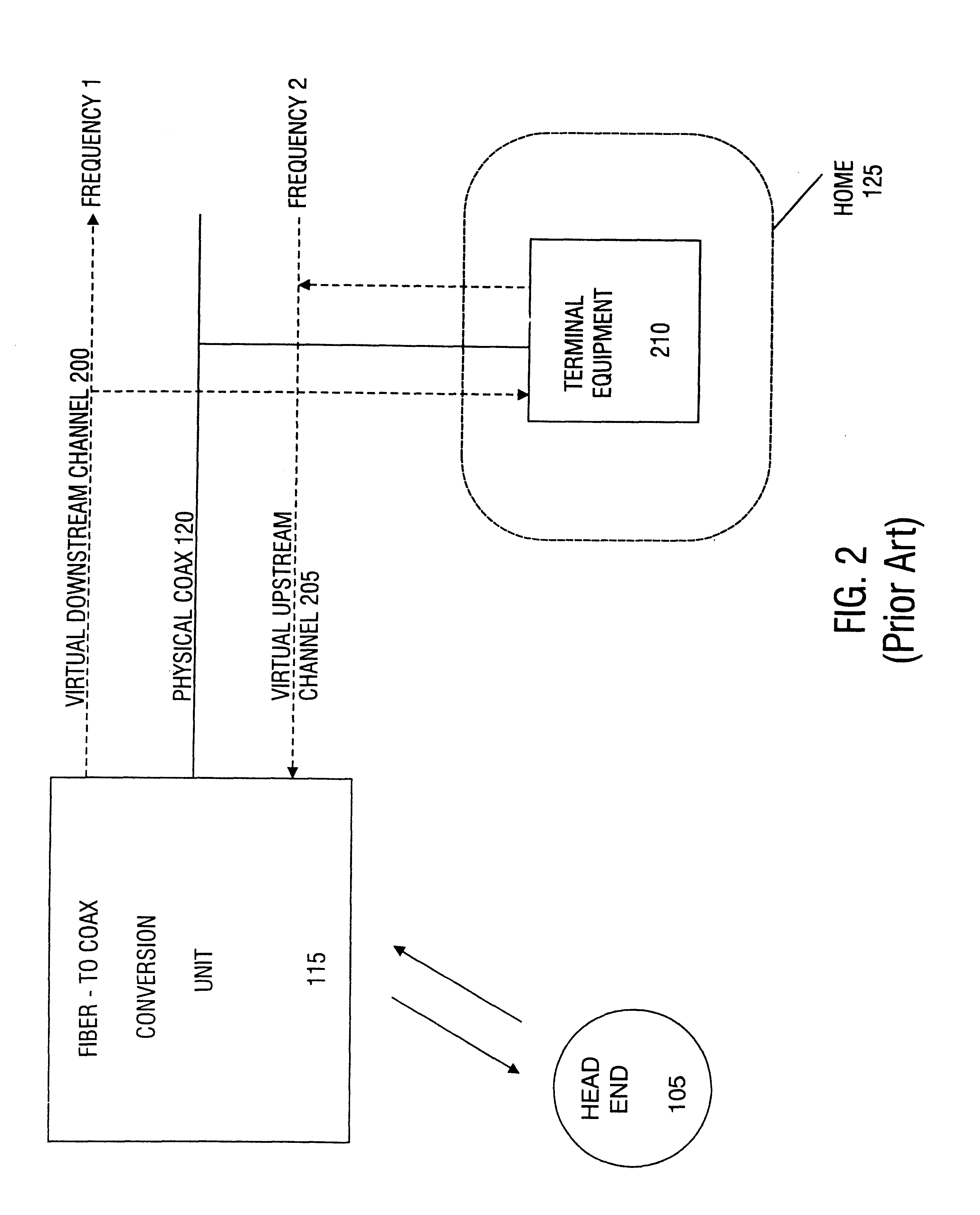Method for providing integrated packet services over a shared-media network
a technology of shared media and integrated packet services, applied in the field of computer network communications, can solve the problems of large packet delay variation, potentially large packet loss, and inability to readily permit the user to originate any significant transmission
- Summary
- Abstract
- Description
- Claims
- Application Information
AI Technical Summary
Benefits of technology
Problems solved by technology
Method used
Image
Examples
Embodiment Construction
For purposes of illustration, a specific embodiment is described below. Bracketed numbers refer to the notes following the description of the embodiment.
In the interest of clarity, not all features of actual implementations are described in this specification. It will of course be appreciated that in the development of any such actual implementation, as in any such project, numerous engineering and programming decisions must be made to achieve the developers' specific goals and subgoals (e.g., compliance with system- and business-related constraints), which will vary from one implementation to another. Moreover, attention will necessarily be paid to proper engineering and programming practices for the environment in question. It will be appreciated that such a development effort might be complex and time-consuming, but would nevertheless be a routine undertaking for those of ordinary skill in the field of data communications system design having the benefit of this disclosure.
4.1 Il...
PUM
 Login to View More
Login to View More Abstract
Description
Claims
Application Information
 Login to View More
Login to View More - R&D
- Intellectual Property
- Life Sciences
- Materials
- Tech Scout
- Unparalleled Data Quality
- Higher Quality Content
- 60% Fewer Hallucinations
Browse by: Latest US Patents, China's latest patents, Technical Efficacy Thesaurus, Application Domain, Technology Topic, Popular Technical Reports.
© 2025 PatSnap. All rights reserved.Legal|Privacy policy|Modern Slavery Act Transparency Statement|Sitemap|About US| Contact US: help@patsnap.com



